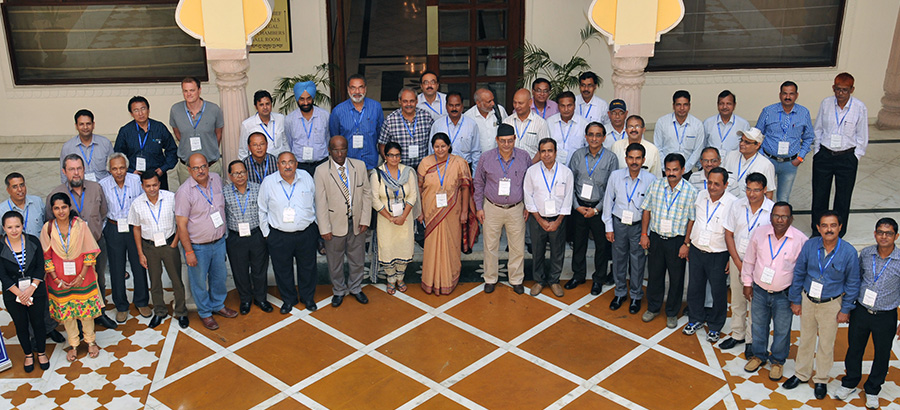Asia Wheat Breeders Develop Strategies to Face Future Threats
 Over the past six years, wheat breeding for biotic and abiotic stress tolerance has gained momentum in South Asia through effective collaboration with national partners under the umbrella of CSISA, according to Arun Joshi, Principal Scientist, CIMMYT and CSISA Objective 4 Leader. Joshi said that new wheat varieties have been developed that have faster grain filling ability and can adapt to a range of sowing dates. “Improved networking with public and private sector seed hubs enabled faster inclusion of these new varieties in the seed dissemination chain,” added Joshi.
Over the past six years, wheat breeding for biotic and abiotic stress tolerance has gained momentum in South Asia through effective collaboration with national partners under the umbrella of CSISA, according to Arun Joshi, Principal Scientist, CIMMYT and CSISA Objective 4 Leader. Joshi said that new wheat varieties have been developed that have faster grain filling ability and can adapt to a range of sowing dates. “Improved networking with public and private sector seed hubs enabled faster inclusion of these new varieties in the seed dissemination chain,” added Joshi.
Fifty scientists from Bangladesh, Bhutan, India and Nepal assembled at Karnal, India on 2-3 September for the 7th Wheat Breeding Review meeting, reflecting the growing interest of the national agriculture research systems (NARS) in South Asia in genetic gains and CSISA’s seed dissemination work. In addition to assessing the broad framework of issues that currently concern wheat improvement, the meeting reviewed the progress of the 2014-15 cycle and established work plans for the coming crop cycle.
According to Indu Sharma, Director, Indian Institute of Wheat and Barley Research, Indian Council of Agricultural Research, collaborative research with a regional perspective will be important to achieve food security and sustain farmers’ livelihoods in the future. While appreciating new research efforts, she highlighted that CSISA has played a critical role in wheat research focused on handling rust resistance and heat tolerance in South Asia.
Participating scientists from CIMMYT and national public partners discussed strategies to strengthen research on future threats such as wheat rusts, early and late heat stress and water scarcity. Wheat rusts have been known to be a constant threat causing severe losses to wheat production worldwide. “The threat from rusts is particularly acute in South Asia, which produces 20 percent of the world’s wheat. Recently, yellow rust has become extremely threatening for India, Pakistan and Nepal,” Joshi highlighted. CIMMYT’s resistance breeding programs continue to keep these diseases (including Ug99) in control, safeguarding farmers and their incomes.
According to Joshi, disease-resistant varieties are one of the most effective control strategies for most diseases of wheat grown by resource-poor farmers in the developing world. For a farmer, the cost of protecting 1 hectare of wheat against disease through the application of modern chemicals is estimated to be US$ 10-80 per hectare. With the use of disease-resistant varieties, farmers can save this cost as the rust resistance in wheat is embedded in the seed.
Various sessions reviewed progress and plans from 10 national research centers. After a gap of 20 years, the partnership between the Bhutanese national research program and CIMMYT has led to the release of three new wheat varieties, informed Sangay Tshewang, Wheat Co-ordinator, Renewable Natural Resources Research & Development Sub Centre, Tsirang, Bhutan during his presentation. Enhancing the capacity of wheat scientists in the region and establishing linkages between breeders, seed producers and farmers featured among the other themes discussed during the meeting.
Looking ahead, many national scientists stressed that they would focus on increasing linkages and improving coordination between the national research programs, CIMMYT and other stakeholders in the seed business to create an enabling environment for faster release of new varieties to farmers and strengthened capacity to handle disease and climate change threats.
This article is authored by Anuradha Dhar, Communications Specialist, CSISA.
Tags: Disease, Ug99, Wheat Breeding, Yellow Rust
